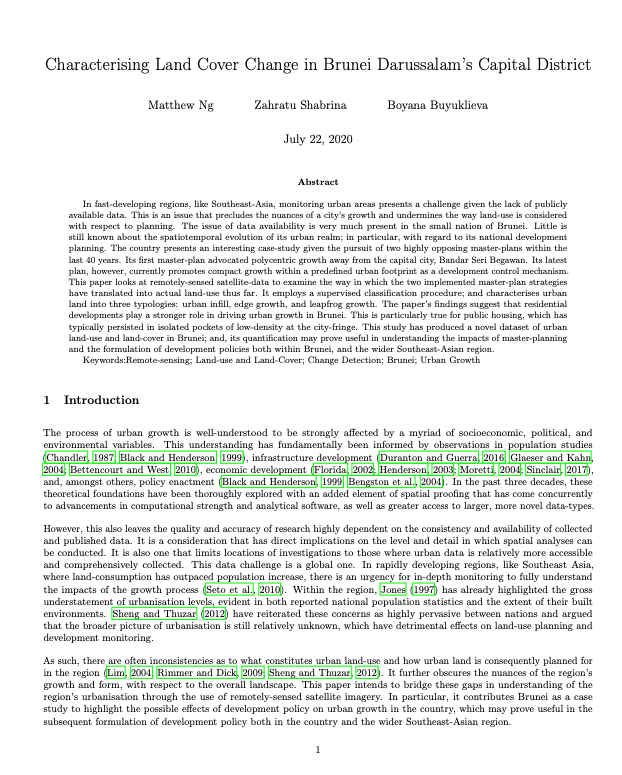Resource information
In fast-developing regions, like Southeast-Asia, monitoring urban areas presents a challenge given the lack of publicly available data. This is an issue that precludes the nuances of a city’s growth and undermines the way land-use is considered with respect to planning. The issue of data availability is very much present in the small nation of Brunei. Little is still known about the spatiotemporal evolution of its urban realm; in particular, with regard to its national development planning. The country presents an interesting case-study given the pursuit of two highly opposing master-plans within the last 40 years. Its first master-plan advocated polycentric growth away from the capital city, Bandar Seri Begawan. Its latest plan, however, currently promotes compact growth within a predefined urban footprint as a development control mechanism. This paper looks at remotely-sensed satellite-data to examine the way in which the two implemented master-plan strategies have translated into actual land-use thus far. It employs a supervised classification procedure; and characterises urban land into three typologies: urban infill, edge growth, and leapfrog growth. The paper’s findings suggest that residential developments play a stronger role in driving urban growth in Brunei. This is particularly true for public housing, which has typically persisted in isolated pockets of low-density at the city-fringe. This study has produced a novel dataset of urban land-use and land-cover in Brunei; and, its quantification may prove useful in understanding the impacts of master-planning and the formulation of development policies both within Brunei, and the wider Southeast-Asian region.
Keywords: Remote-Sensing; Land-Use and Land-Cover; Change Detection; Brunei; Urban Growth


